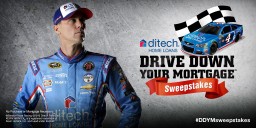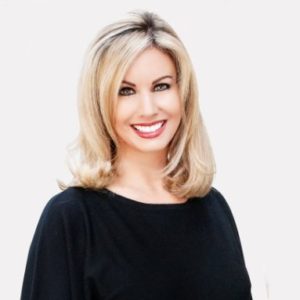Over the years, this blog has applauded the efforts of a number of brands endeavoring to “do well by doing good” (i.e. Petco, J&J, Richline, Patron, Omni Hotels and more). Framing such efforts of corporate social responsibility (CSR) in this way, I may have implied that CSR is actually a strategy in itself. Fortunately for you in our interview below, Karen Quintos, CMO of Dell, clarifies why CSR is not a strategy but rather a “mindset” that can and should permeate an entire organization from product development to customer service, recruiting to marketing. In one of my favorite quotes of the year, Karen notes, “Ultimately CSR is not a marketing strategy–it’s a tool for building a better business.”
This distinction is important and instructive. “Building a better business” is the ultimate goal of any enterprise which involves finding a sustainable competitive advantage that will create a return on capital invested. So when Dell found a way to cut materials out of its packaging, they not uncovered $50 million in cost savings but also they avoided creating 30 million pounds of waste which was better for the environment and their customers (who didn’t have to deal with the extra waste.) This is just one of the meaty examples that Karen shares in our conversation about CSR, one that will make it very easy for you to understand why she was recognized by The CMO Club as a Social Responsibility Award winner.
Drew: Congratulations on winning the Social Responsibility Award. How do you define Corporate Social Responsibility?
At Dell, we look at CSR a bit differently. It’s not a strategy; it’s a mindset that’s part of our culture. It’s about using our processes and products to create value for our customers and communities in a world of growing demand and finite resources – and leaving the world better for the next generation.
Drew: Can you provide a short recap of your CSR initiatives in 2015?
We continue to make terrific progress against our Legacy of Good Plan, which outlines 21 ambitious CSR goals we intend to achieve by 2020. These include environmental and giving goals, but also commitments to workplace diversity and volunteerism. We’re progressing on all fronts, but one in particular that I’d like to highlight is our industry-leading circular economy practices. We are designing out waste and making better use of available and sustainable resources through our closed-loop supply chain. To date, we’ve recycled more than 4.2 million pounds of e-waste plastics and put them back into new Dell products. We recently launched a recycled carbon fiber program that replaces virgin materials in Alienware and Latitude products. It will keep about one million pounds of materials out of landfills this year alone. These programs provide greater efficiency to Dell, but also to our customers who are increasingly looking for help to achieve their own CSR goals.
Drew: How do you measure the success of these programs?
We know we’re successful when our programs deliver both business value and societal benefit. A perfect example is our product packaging. Since 2009, we’ve saved more than $50 million dollars and avoided 30 million pounds of packaging by using sustainable materials and deliberately reducing the amount of packaging used to ship our products. That’s a significant savings. It’s also a great innovation story with real benefit to our planet and our customers, many of whom share our commitment to a cleaner planet.
Drew: Building a business case for CSR initiatives can be tricky. What were the keys to gaining management support?
Educating and shifting mindsets within management is critical. There’s a perception that these programs involve compromising on cost or quality, but we’re actually seeing the opposite. CSR initiatives are often a source of hidden efficiencies and innovation. But the best approach, in my opinion, is deeply embedding CSR into the corporate culture. At Dell, it is part of how we design, deliver, sell and support our solutions globally.
Drew: There are an unlimited number of options when it comes to CSR. How did you narrow the list down?
Everything we do from a CSR perspective ties back to our core belief that the purpose of technology is to enable people to solve problems, make discoveries, and advance society on a global scale. That starts with universal access to IT and training, which is why our global strategic giving programs focus on bringing Dell technology and 21st Century skills to underserved youth around the world. It also means partnering with others to tackle huge, global challenges. We’re working closely with doctors and researchers to bring the power of high-performance computing to bear in the diagnosis and treatment of pediatric cancer patients – and we’ve seen some amazing results. When your CSR strategy is grounded in your company purpose, it becomes a lot more clear what and how you should be engaging with your people, communities and planet.
Drew: When it comes to sharing your company’s CSR initiatives is there a fine line between letting the world know about it and overplaying the contribution? Where do you sit on this spectrum from letting the good action speak for itself and broadcasting it from the treetops?
There is absolutely a balance. We believe it’s important for our customers to know the good we do and, quite frankly, they are asking more and more. As a matter of fact, CSR is a factor in about 60 percent of the RFPs we complete each year. It’s also becoming table stakes for hiring and retaining millennials. We announced a partnership with actor and entrepreneur, Adrian Grenier, this year as our first Social Good Advocate. He is a strong, outside voice for Dell and is helping amplify and guide our responsible business approach. But ultimately CSR is not a marketing strategy. It’s a tool for building a better business.
Drew: What is the single biggest challenge that you’d like to overcome in 2016?
Since finding a couple more hours in the day isn’t an option, I don’t think I could name just one. I’d like to see the world’s biggest problems solved – hunger, poverty, cancer, climate change, energy, etc. I’d also like to see more global support for the world’s entrepreneurs who, as the No. 1 source of innovation and jobs, are key to our future. The good news and a big reason why I love working in this industry is that technology is helping entrepreneurs and bright minds all over the world breakthrough and make important discoveries in these areas every day. Who knows – 2016 could be the year some of these big challenges are solved.






